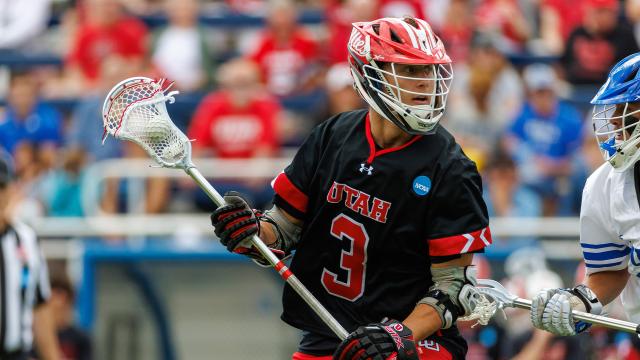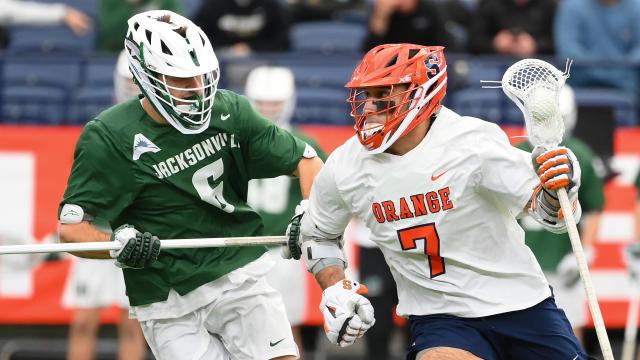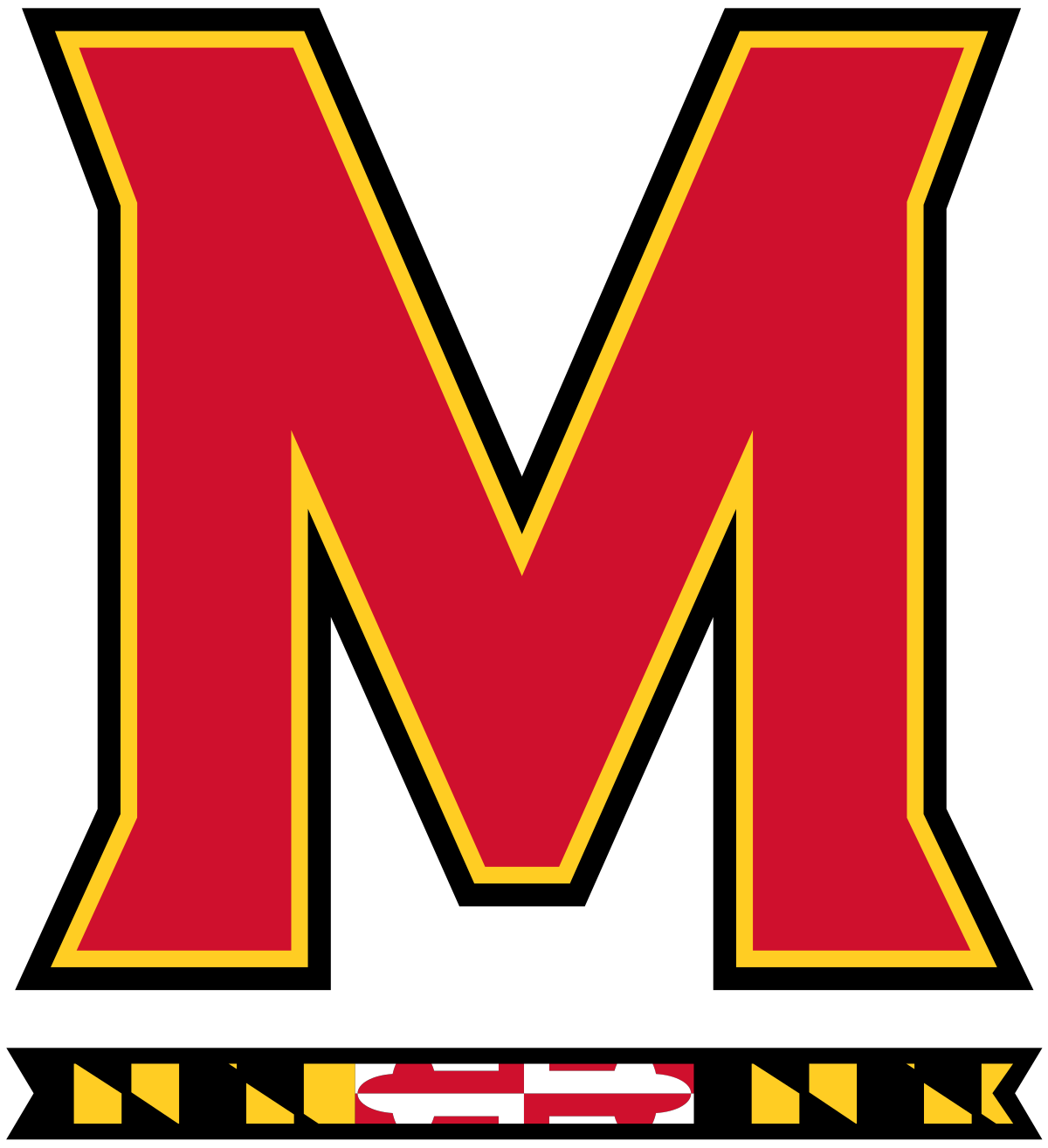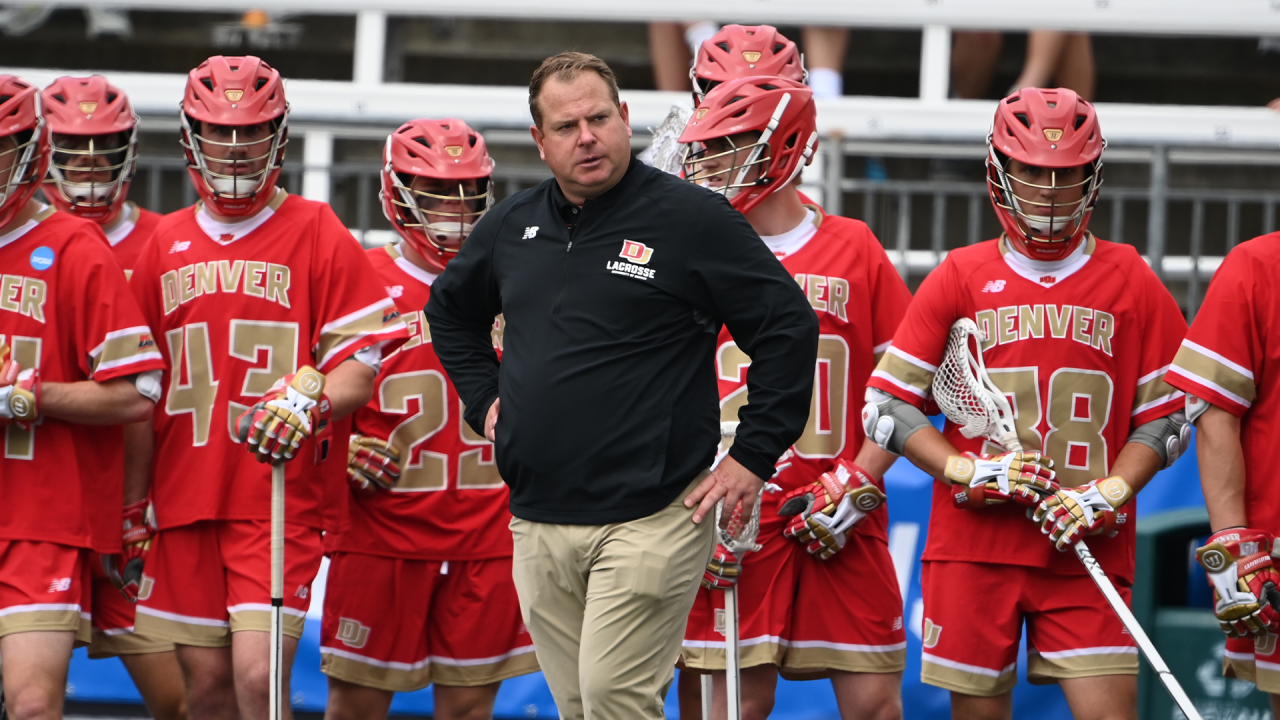
D-I Men's Rewind: Tillman's QF Mastery, Brown Joins Exclusive Group
The most eye-catching result of the NCAA tournament’s quarterfinal weekend was seventh-seeded Maryland’s 14-11 upset of second-seeded Duke on Saturday.
But was it really a surprise?
The Terrapins shook off their lengthy offensive stupor a week earlier against Princeton. (They also shot 7-for-27 in the first three quarters against Duke.) But they stuck closer than they probably should have in the first half thanks to goalie Logan McNaney’s strong first quarter and faceoff man Luke Wierman’s two goals.
Then Wierman helped Maryland control the ball in the second half, Duke’s defense wore down and the Terps surged in the fourth quarter.
Good goalie play and winning faceoffs, ’twas ever thus.
According to the official play-by-play — an imprecise accounting, but still a useful one — Duke had 14 possessions in the second half spanning 9:46. It took nine shots, scored three times and committed seven turnovers. Five of the possessions lasted at least 50 seconds, and only one led to a goal.
So, the Blue Devils didn’t have the ball much in the final 30 minutes and they weren’t able to crack Maryland’s defense in the rare instances they had an extended possession.
Duke did not make players available to speak with the media after Saturday’s loss. But from afar, it felt like a championship window that once seemed wide open shut on the Blue Devils without a title.
Some of that is because Saturday concluded the college career of senior Brennan O’Neill, last year’s Tewaaraton winner and the MVP of the World Lacrosse Men’s World Championship last summer. O’Neill never demanded attention — he repeatedly and believably professed he simply wanted to play a sport he enjoyed with his friends — and he handled the spotlight with grace over the last four years even if he did not seem particularly interested in much of its spillover effects.
But a national championship was the clear-cut goal for him and the 18 other Blue Devils who exhausted their eligibility this season, a group coach John Danowski preemptively defended Saturday.
“It doesn’t define them,” Danowski said. “They’re disappointed and they’re hurting together, as we all are. We’re hurting not because we lost the game, but because the relationship kind of ends right now or transitions to something else.”
It shouldn’t define four years, but it also does not mean absolution for the Blue Devils for authoring an utterly confounding season. When Duke was coming off a loss (including in its opener, when its most recent outing was last year’s title game loss to Notre Dame), it was 6-0. When it wasn’t, it was 7-6.
Arguably the Blue Devils’ best victories — a rout of Princeton, a smothering of Denver, their annual regular-season drubbing of Virginia and the ACC semifinal defeat of Syracuse — came after losses. Sometimes those setbacks were ugly. They scored only four goals at Syracuse four days before playing Denver. The second Syracuse game came six days after an underwhelming regular-season finale at North Carolina.
Channeling the raw frustration of a defeat may have been the surest way to summon Duke’s most compelling performances. It is unnecessary to explain why that is a suboptimal trait when four consecutive victories are needed to claim a tournament title.
And that brings it back to the original question. The Blue Devils’ quarterfinal stumble wasn’t the most likely outcome entering the weekend. But it really wasn’t stunning in the context of their season. And given its talent, experience and high hopes entering the year, that might be the biggest surprise of all.
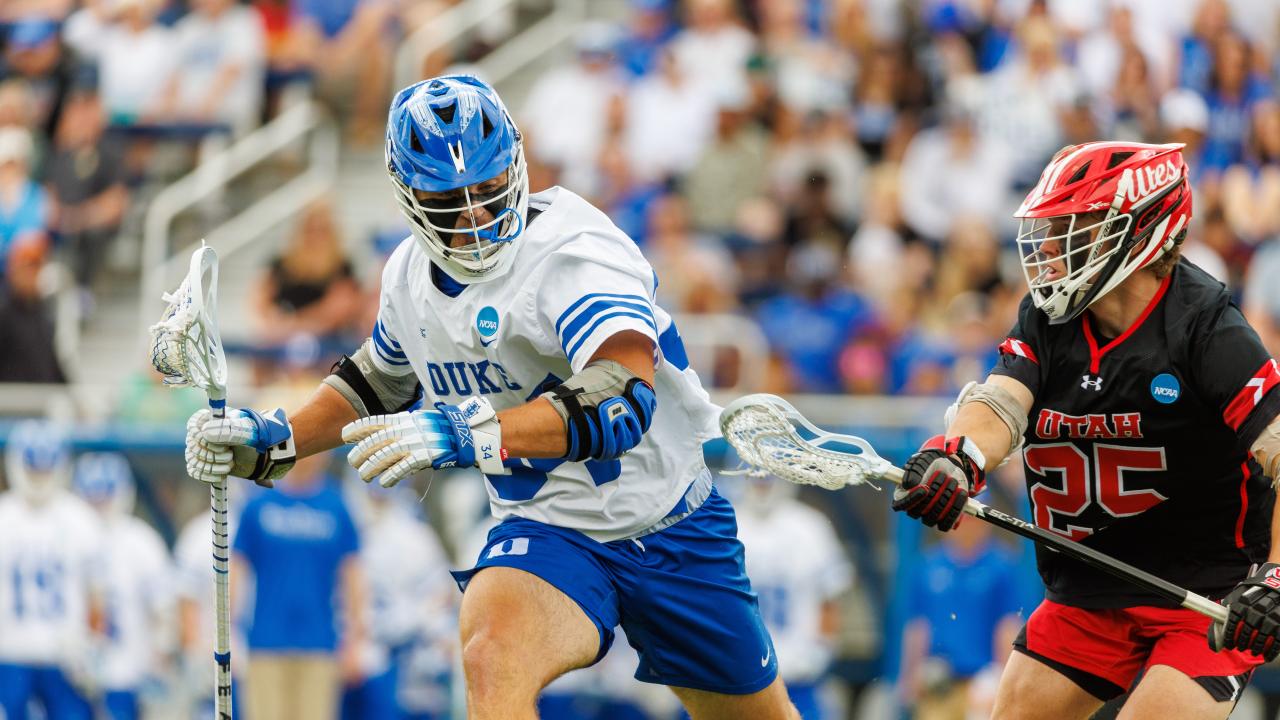
LOW SEEDS BLOOM
A weekend after the tournament’s first completely chalky first round since 2004, there was a bit of bracket chaos.
The No. 2 (Duke), No. 3 (Johns Hopkins) and No. 4 (Syracuse) seeds were all eliminated in the quarterfinals, marking the seventh time at least three of the top four seeds were swept aside prior to the semifinals.
Unsurprisingly, it happened only once (in 1991) prior to the tournament’s expansion to 16 teams in 2003. Before then, the top four seeds needed only one victory to reach the semis. Since then, everyone has needed to win twice to reach Memorial Day Weekend.
The No. 1 seed claimed the title in three of the first six instances — 1991 North Carolina, 2014 Duke and 2022 Maryland. Fifth-seeded Duke tripped up the No. 1 seed (Virginia) in the 2010 semifinals before edging Notre Dame two days later, and unseeded North Carolina stunned top-seeded Maryland on Memorial Day in 2016.
There’s also one case when none of the top four seeds made it through. Virginia, as a No. 7 seed, beat unseeded Maryland in the 2011 national title game in Baltimore.
QUARTERFINAL KING
John Tillman earned his 200th career coaching victory on Saturday, reaching the milestone doing what he does best: Winning NCAA tournament quarterfinals.
The Maryland coach has led the Terrapins to a 10-1 record in the quarterfinals, and his .909 winning percentage in the round is the second best in tournament history for anyone with a minimum of five games at that stage of the event. Maryland’s Bud Beardmore led the Terps to the semifinals in the tournament’s first nine years in the 1970s.
The quarterfinals arguably elicit more tension than any round, especially in the era of the Championship Weekend format. Win, and it’s off to the sport’s biggest stage and the assurance of always being known as a “Final Four team.” Lose, and there’s none of that plus the disappointment of falling just short of it.
Also noteworthy: Maryland is 4-1 as a lower-seeded team in a quarterfinal under Tillman, with the Terps knocking off a No. 1 seed (2011 Syracuse), two No. 2 seeds (2012 Hopkins and 2024 Duke) and a No. 3 seed (2015 North Carolina) in the quarterfinals during his tenure.
TOP QUARTERFINAL WINNING PERCENTAGES
Minimum five games coached.
Bud Beardmore, Maryland, 9-0 (1.000)
John Tillman, Maryland, 10-1 (.909)
Roy Simmons Jr., Syracuse, 17-2 (.895)
Henry Ciccarone, Johns Hopkins, 8-1 (.889)
Lars Tiffany, Brown/Virginia, 5-1 (.833)
Willie Scroggs, North Carolina, 9-2 (.818)
Richie Moran, Cornell, 9-3 (.750)
John Desko, Syracuse, 10-4 (.714)
Don Zimmerman, Johns Hopkins/UMBC, 5-2 (.714)
John Danowski, Hofstra/Duke, 12-6 (.667)
Bill Tierney, Princeton/Denver, 15-8 (.652)
Jeff Tambroni, Cornell/Penn State, 5-3 (.625)
DAZZLING DEBUT
Matt Brown brought some head coaching experience into his first year in charge at Denver — after all, the man was Team Canada’s coach in the World Lacrosse Men’s Championship last summer. But for the purposes of college coaching, he’s a first timer.
Which puts the Pioneers’ leader in select company after Denver’s 10-8 defeat of Syracuse in Sunday’s quarterfinals.
Brown joins Dave Klarmann (1991 North Carolina), John Desko (1999 Syracuse) and Connor Buczek (2022 Cornell) as the only first-time head coaches to lead programs to the NCAA semifinals since the Championship Weekend era was established in 1986. Notably, all four were assistant coaches at their respective schools who were promoted from within.
Only two first-time coaches in the tournament’s first 52 editions led their teams to titles in their debut seasons: Klarmann and Johns Hopkins’ Don Zimmerman, who debuted with back-to-back titles in 1984-85 after previously serving as a Blue Jays assistant.
TEWAARATON WATCH
A look at how four Tewaaraton Award finalists playing this weekend fared …
Liam Entenmann, G, Notre Dame. Had eight saves and 10 goals allowed against Georgetown, but much of the damage was done long after the result was decided. After three quarters, Entenmann had six saves and four goals allowed. He’ll take a .551 save percentage and 9.39 goals-against average into the NCAA semifinals.
Pat Kavanagh, A, Notre Dame. Back home on Long Island, the graduate student had three goals and an assist on four shots. He now has 28 goals and 41 assists on the season.
Brennan O’Neill, A, Duke. The senior had a hat trick in his final college game, including a spectacular individual play with 6:32 left to briefly tie the Blue Devils and Maryland at 11. He concluded his last season at Duke with 54 goals and 27 assists.
Connor Shellenberger, A, Virginia. Fired in his first career overtime winner as part of a three-goal, one-assist effort in the Cavaliers’ defeat of Johns Hopkins. He’s up to 31 goals and 51 assists this year.
THIS WEEK’S ATTENDANCE MATTERS
Quarterfinal hosts Hofstra and Towson drew announced crowds of more than 9,000, the first time since 2017 that both quarterfinal sites did so.
Hofstra announced 9,086 for the Georgetown-Notre Dame and Duke-Maryland games on Saturday, while Towson — blessed with a participant playing a few miles from its campus — got 9,642 for Denver-Syracuse and Johns Hopkins-Virginia.
It’s the seventh time since the NCAA went to predetermined quarterfinal sites in 1996 that both crowds surpassed 9,000. The others were 2001 (Hofstra/Maryland), 2009 (Hofstra/Navy), 2011 (Hofstra/Foxborough, Mass.), 2012 (Navy/Chester, Pa.), 2015 (Denver’s Invesco Field/Navy) and 2017 (Hofstra/Delaware).
It should come as no surprise that Hofstra and Navy — two schools that combine geographical advantages for drawing a crowd with excellence at administering every facet of an NCAA quarterfinal — are scattered all over that list. Towson, too, deserves credit for smoothly handling its first quarterfinal since 2006 (though it is plenty experienced with May lacrosse, having hosted several women’s final fours since then).
FOUR GAMES, EIGHT STARS
Jack DiBenedetto, D, Denver. While the Pioneers pride themselves on team defense and not obsessing too much over individual matchups, DiBenedetto spent a good chunk of Sunday afternoon marking Syracuse’s Joey Spallina, who was held without a point and didn’t even take a shot until 8:33 remained.
Chris Kavanagh, A, Notre Dame. The junior set a school record with eight points in an NCAA tournament game, delivering five goals and three assists to send the Fighting Irish to Championship Weekend for the seventh time.
Michael Lampert, A, Denver. The senior assisted on the goal that started the Pioneers’ five-goal run just before halftime, and he barely beat the shot clock for the last score in the spurt late in the third quarter. He was one of four Denver players to score twice against Syracuse.
McCabe Millon, A, Virginia. The Cavaliers leaned on the freshman more than in recent weeks, and he delivered three goals and three assists — his largest point total since collecting seven against Robert Morris on March 5.
Marco Napolitano, D, Notre Dame. Part of an exceptional defensive unit that held Georgetown to four goals in the first three quarters, the graduate student also scored his first career goal with a 45-yarder into an empty net with 9:15 to play.
Ben Wayer, LSM, Virginia. The junior scooped up 10 ground balls and collected an assist on a transition goal in the fourth quarter to help the Cavaliers slip past Johns Hopkins.
Luke Wierman, FO, Maryland. The Terrapins dominated possession against Duke thanks to Wierman, who won 20 of 29 draws and has claimed 40 of 55 in two NCAA tournament games.
Ajax Zappitello, D, Maryland. The senior shadowed Duke’s Josh Zawada, helping to limit the graduate student to an assist and just one shot in the Terps’ upset victory.
Patrick Stevens
Patrick Stevens has covered college sports for 25 years. His work also appears in The Washington Post, Blue Ribbon College Basketball Yearbook and other outlets. He's provided coverage of Division I men's lacrosse to USA Lacrosse Magazine since 2010.

Related Articles
